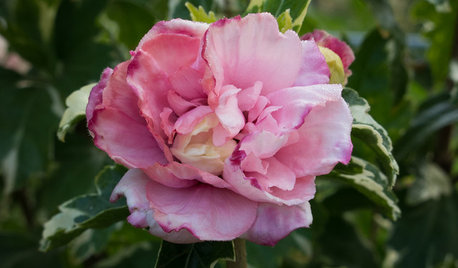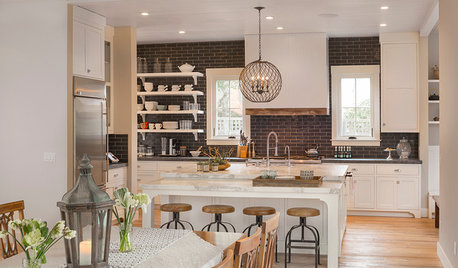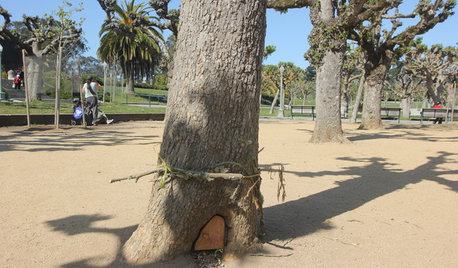If You've Ever Wondered...Why did my hibiscus change color......
agrigirl
14 years ago
Featured Answer
Comments (9)
rosco_p
14 years agoagrigirl
14 years agoRelated Discussions
The most impractical piece of rose advice you've ever gotten
Comments (135)" Abstract: Browsing by overabundant herds of white-tailed deer (Odocoileus virginianus) can cause signifi cant economic damage to agricultural crops and landscape plantings. In many instances, for both commercial growers and homeowners, commercially available repellents may be an appealing alternative to physical exclusion and lethal control of animals. We tested 10 different commercially-available repellents (Chew-Not®, Deer Off®, Deer-Away® Big Game Repellent, Plantskydd®, Bobbex®, Liquid Fence®, Deer Solution®, Hinder®, Repellex® systemic tablets, and coyote urine) on yews (Taxus cuspidata Densiformis) at 2 different locations in Connecticut. The study included both positive (fence) and negative (no treatment) controls. We planted yews in 2 blocks at each location in the spring of 2006; each block had 12 groups of 6 yews. We randomly assigned one of the 12 treatments to each group of yews within each block. We applied repellents based on manufacturers’ label recommendations for the 2006 and 2007 growing seasons and recorded application costs. We derived a protection index based on plant size and dry needle weights at the end of the 2007 growing season. In general, repellents that required more frequent application performed better. Bobbex® ranked highest, but was the most expensive repellent treatment. Hinder® performed nearly as well at a fraction of the cost. Yews protected by Repellex®, Deer Solution®, coyote urine, and Plantskydd® were the same size as unprotected controls at both sites and did not have signifi cantly more needles. No repellents prevented 100% of browse damage. The choice of repellent usage is a trade-off among effectiveness, cost, ability to follow recommended reapplication interval, and plant to be protected." http://berrymaninstitute.org/files/uploads/pdf/journal/spring2010/HWC_4.1%20sp2010.pdf#page=60...See MoreHave we Ever Pushed you off a Cliff? How Far Did You Fall?
Comments (28)"If anything I find my tastes are influenced negatively here, not in a bad way really, just differently. I love funky bohemian combined with traditional and modern but don't feel that love from most posters so sometimes I second guess myself. There are some canvas prints at Pier One I am crazy about yet they are cheap. Will I hate them because they look cheap? ($30 each btw) Will they make my decor seem too wild? Cheap? As an artist, most other artists abhor this kind of thing and usually are quite snobbish about having only originals in their house. They would not buy a cheap print from Pier One! So, can I over come this pressure and the pressure here (subtle however) and actually get what I love? I do not like the vast majority of art people choose for their home so I would never ask anyone here "what do you think of this print?" I'm rambling but I guess it's all about keeping myself true to me." Bumblebeez, I feel your pain, really I do. :) Something that would truly *speak* to me, would be a gliclee of Monet's Sunrise. It was a work that was derided by critics in its time and I had the opportunity to see it in the Monet Museum in Paris. It would have much more meaning to me, and to my husband, than something I bought off of Etsy or Ebay. At least you, as an artist, have the pedigree be able to get away with buying what you want (not that you should have to make excuses). It's the same way about furniture. If it's not heirloom or CL, there will always be detractors. I just try to suck it up and decorate to the best of my abilities....See MoreDo You Ever Wonder Why This Is?
Comments (42)So many great responses here already~ very well said and very eloquent. . . and I'm right there with you! I realize in these tough financial times that shows like those on HGTV have to watch their budgets, but I REALLY miss the shows they used to have; The ones with great quality designers like Kitty Bartholomew, Joe Ruggiero, Lynnette Jennings, etc. These days, I agree, they seem to mainly push cheap, sterile, cookie-cutter Contemporary rooms . . . although I have to admit that 99% of the shows on HGTV are now reduced to the "wanna buy or sell a house" shows that I am so darn tired of! Although there are beautiful, well done Contemporary rooms (done by Candice Olson), I'd love to see some HGTV designers branch out and do rooms like the majority of us live in. Too bad they don't hire Eddie Ross to do an HGTV show. Lynn...See MoreDo you ever have remorse over expensive furniture you've bought?
Comments (31)Ok, three of my favorite voices around here--Palimpsest, Ideefixe and Oakleyok--have pretty well covered all the bases, but just to recap... The three biggest causes of Decorating Remorse--other than watching TV decorating shows & wishing you had done something other than what you already did, I mean--are Being in too big a hurry & buying something just to have something (rather than have nothing), Worrying about inconsequential stylistic labels & categories, and Buying brand new pieces. I did without a sofa for five years rather than buy something merely to be have something to sit on, I don't worry about what style supposedly goes with what, and I never buy anything new. Well, almost never. The most expensive thing in my house is an early 19th century sofa, for which I forked over 850 of my hard-earned dollars, and the two-months-long diet of peanut-butter sandwiches that paid for it was worth every bite. The second-most-expensive thing I ever bought was also the only thing I've ever bought new: a gigantic 3-piece arched mirror set out of a popular catalog that looked very handsome in the photo but which turned out to be a piece--well, three pieces--of junk, which I should have predicted, since, Hello!, it was in a popular catalog. All I can say is I must have been on Nyquil that day. Anyway, I seldom make mistakes, but when I do, I don't brood & beat myself up over them, so I hauled them down to the service entrance lobby of my building and in a few hours, they were gone. The sofa I'll have forever....See Morerachaeleotto_yahoo_com
12 years agoNancy Gallaway-Garrison
8 years agocateandmatt
8 years agomerkity
8 years agolast modified: 8 years agojedobaTX9b
8 years agohibiscusmaniac
8 years ago
Related Stories

DECORATING GUIDESThe Dumbest Decorating Decisions I’ve Ever Made
Caution: Do not try these at home
Full Story
BUDGETING YOUR PROJECTHouzz Call: What Did Your Kitchen Renovation Teach You About Budgeting?
Cost is often the biggest shocker in a home renovation project. Share your wisdom to help your fellow Houzzers
Full Story
EDIBLE GARDENSHouzz Call: What Did You Grow This Summer?
Let’s celebrate the homegrown fruits and vegetables of the season. Post your pictures and tell us about your harvest
Full Story
DISASTER PREP & RECOVERYRemodeling After Water Damage: Tips From a Homeowner Who Did It
Learn the crucial steps and coping mechanisms that can help when flooding strikes your home
Full Story
FUN HOUZZDouble Take: Did MoMA Drop a Mini House in the Yard?
Or maybe it's garden art or even a modernist-loving giant's step stool. Use your imagination, then get the true tale here
Full Story
GARDENING GUIDESGreat Design Plant: Hibiscus Syriacus ‘Sugar Tip’
As pretty as a party dress, ‘Sugar Tip’ has layers of pink that catch the eyes of butterflies
Full Story
TRANSITIONAL HOMESHouzz Tour: Change of Heart Prompts Change of House
They were set for a New England look, but a weekend in the California wine country changed everything
Full Story
Let's Dish! Did You Watch the Flipping Out Premiere?
Contemporary Remodel Kicks off Design Show's New Season. What Did You Think?
Full Story
FUN HOUZZDid Elves Make a Home in a San Francisco Park?
Speculation has swirled around a Lilliputian doorway in Golden Gate Park. We give you the true story — and a design dilemma
Full Story
ARCHITECTURERoots of Style: Where Did Your House Get Its Look?
Explore the role of architectural fashions in current designs through 5 home styles that bridge past and present
Full StorySponsored



Arly Helm